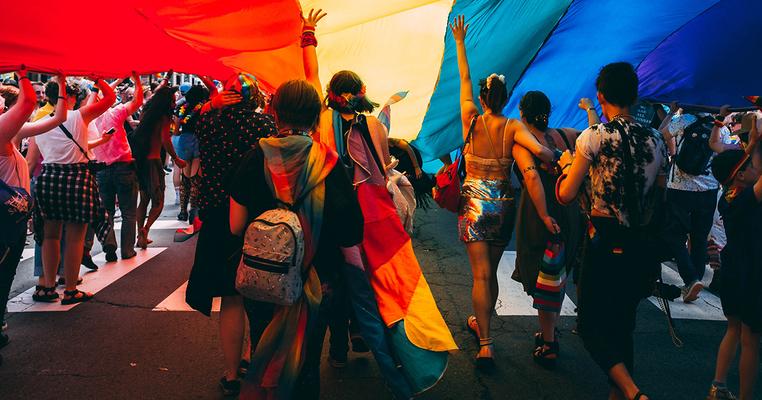
The Climate Crisis is an LGBTQIA+ Issue
The climate crisis affects all of us, each and every day. But it affects some more than others, including many communities that already disproportionately experience the effects of inherently inequitable societal systems.
For these people, the climate crisis is only making matters worse – because while disasters do not discriminate, relief and recovery practices do.
In the 17 Principles of Environmental Justice that emerged from the First National People of Color Environmental Leadership Summit in 1991, we see an ever-present acknowledgement of how environmental justice must “encompass mutual respect and justice for all peoples, free from any form of discrimination or bias.”
This Pride month, it’s important for the climate and environmental justice movement to reflect on this framework and make a commitment to create safe spaces for LGBTQIA+ persons as an integral part of the climate fight.
According to the IPCC, people who are already vulnerable and marginalized are more likely to experience the greatest impacts of the climate crisis. Social factors like stigma, higher unemployment, and inadequate safe living spaces make certain communities more vulnerable to environmental catastrophe.
>> Learn more: 6 LGBTQ+ Climate Organizations Leading the Way <<
Around 40% of the youth experiencing homelessness in the United States identify as LGBTQI+, and it is estimated that one-in-five LGBTQI+ Americans live below the poverty line. Gender-based violence, including in the trans community, also has been shown to be directly linked to climate-related disasters. These combined factors make LGBTQI+ persons much more vulnerable to the harmful impacts of a warming planet and the natural disasters that come along with it.
Yet, in the face of climate disasters, the LGBTQIA+ community has been routinely excluded from response, relief, and recovery efforts.
Emergency centers are rarely equipped to adequately provide a safe and comfortable space for LGBTQIA+ persons. For example, following Hurricane Katrina, a transgender person was jailed for showering in a women’s restroom after being permitted to do so by a volunteer.
“Many of the women who were affected by the storm do not fit that traditional heterosexual image of ‘woman,’ and these women not only faced the obstacle of sexism but also homophobia and transphobia as they sought out assistance,” writes Charlotte D’Ooge, development director for the American Civil Liberties Union of Louisiana.
This issue is not unique to the United States: in the aftermath of 2004 Indian Ocean tsunami, the Aravanis (a distinct group of stigmatized people in India who do not identify as either male or female) “were excluded from the relief process, temporary shelters, and official death records…thus rendering this population invisible in many of the relief and reconstruction agendas,” write gender theorists Lori Hunter and Emmanuel David in their working paper, “Climate Change and Migration: Considering the Gender Dimensions.”
LGBTQIA+ activists are essential to the climate and environmental justice cause. So what can we do?
As we continue to celebrate Pride and uplift the stories of LGBTQIA+ climate activists, keep in mind that marginalized communities are at greater risk when it comes to the climate crisis. Educate yourself on these issues, and make a point to discuss these systemic issues with your friends, family, and communities.
And if you’re headed to your local Pride parade, don’t forget your climate sign. It’s just as important there as it is at ever other event, no matter the cause, because the climate crisis touches everything.
Want to learn more about the exciting campaigns, training programs, educational content, and climate advocacy happening at The Climate Reality Project? Sign up for our email list and be the first to know the latest climate science as well as when powerful opportunities to stand up for the future we want!

